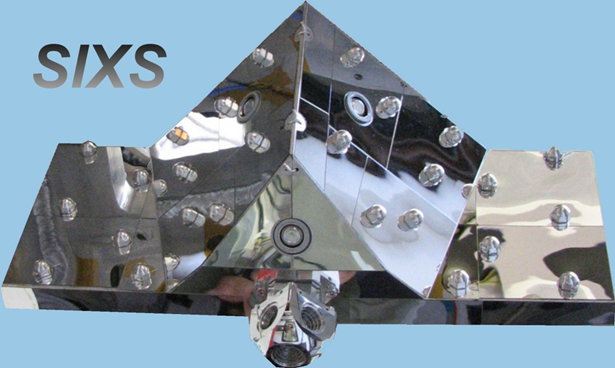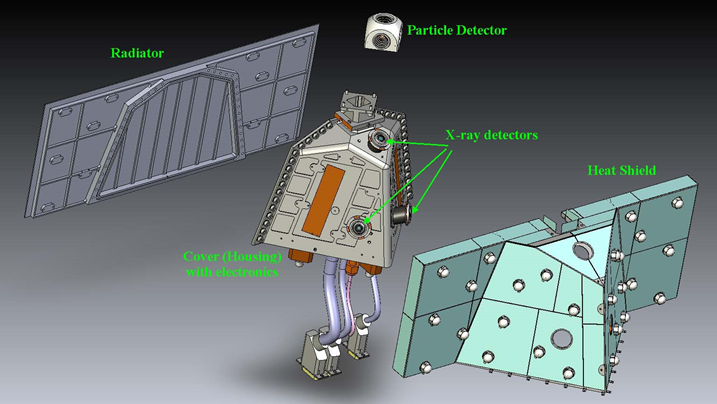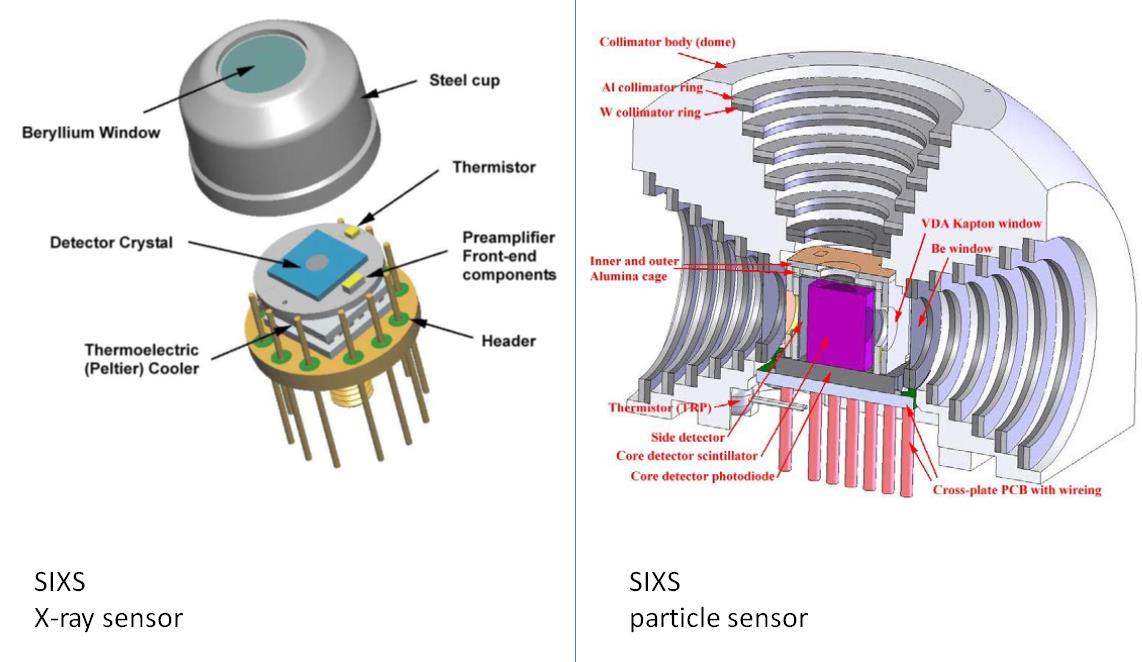The Solar Intensity X-ray and particle Spectrometer (SIXS) on board BepiColumbo Mercury Planet Orbiter (MPO) will investigate the X-rays and energetic particles incident on the Hermean surface and in the inner heliosphere.
The main goals of SIXS are…
Since the intensity and energy spectrum of the solar X-rays is highly variable and irregular on relatively small time-scales, simultaneity of measurements by SIXS and MIXS is a fundamental requirement in order to be able to quantitatively analyse the data from MIXS, and derive the proportion of each element contributing in the X-ray fluorescence within the energy range of MIXS.
The intensity and energy spectrum of both energetic electrons and protons can also vary rapidly and since the precipitating flux can produce Particle Induced X-ray Emission (PIXE), simultaneity of measurements by SIXS and MIXS is a necessary in order to be able to quantitatively analyse MIXS data. Separating out the relative proportions of Solar fluorescence and PIXE on the dayside is critical. Solar fluorescence and PIXE surface spectra produces a very different characteristic spectrum within the energy range of MIXS. Whilst MIXS will observe pure PIXE spectra on the nightside, the spectra will be blended to varying extents on the dayside. Understanding the inputs to the observed spectrum is thus key to deriving the concentrations of each element.
The paths and energies of particles, on the other hand, depend on the solar magnetic field and are affected by the magnetosphere of Mercury. Thus, the relations between particles observed by BepiColombo and those hitting the surface of Mercury below the spacecraft are complicated, and depend on the orbital phase and position of BepiColombo in the Hermean magnetosphere. These phenomenological aspects determine the required angular resolutions for the detectors of the SIXS instrument. We need some degree of angular resolution for the particle measurements to be able to separate with SIXS the components of particle fluxes that will hit Mercury’s surface in the footprint of MIXS images.
The long cruise phase will thus provide potential for SIXS to obtain highly valuable, and also new unique scientific measurements of energetic interplanetary electrons and protons in the inner solar system, and some opportunities for measurements of the X-ray Sun.
Understanding the propagation of energetic particles from the inner heliosphere along a Parker spiral to the Earth is a key facet of terrestrial Space Weather prediction which is still to be fully explored.


Instrumentation
The history of SIXS-like X-ray solar spectrometers dates back to the SMART-1 XSM. Like, ISM, the SIXS X-ray detectors benefit from very good spectral and time resolution. The particle detection system of SIXS (SIXS-P) relies on a traditional design principle of a detector stack of silicon detectors and a thallium doped cesium iodide scintillator with photodiode readout. The system employs the classical ∆E–E technique to measure the energy of a particle and to determine the species of incident electrons and ions. The same method was earlier applied by the team in the High Energy Detector (HED) of the ERNE instrument on-board Solar and Heliospheric Observatory. Compared to ERNE and HED, SIXS-P is much more compact, consumes less power, and has much wider field of view, being able to determine the particle flux in five orthogonal directions. The responsivity of Mercury’s surface to the spectral distributions of various incoming forms of radiation are the fundamental factors that have constrained the types, the spectral ranges and resolutions, the dynamical ranges, and the aperture sizes of the detectors of the SIXS instrument.
The SIXS and MIXS instruments share the same on-board computer and software (SW), and is designed so that they can be operated almost fully independently from each other. During the Mercury science phase, the main operational constraint of SIXS will be simultaneous operations with MIXS. Considering the scientific usefulness of SIXS data for its main purpose, all sources of radiation in the vicinity of the planet that can result in X-ray emission from Mercury in the energy range of MIXS (0.5 to 10 keV TBC) are of significance, and determine the performance requirements of SIXS.
In order to be able to utilize the MIXS measurements at any orbital phase of BepiColombo MPO around Mercury, SIXS is required to be able to make relevant measurements throughout an orbit. Therefore, on the dayside of Mercury, an X-ray detector of the SIXS instrument must have a direct view towards the Sun, and the particle detector is required to be able to determine the particle fluxes and directions at any orbital phase, including the night side of Mercury. These requirements are translated to a requirement for the field-of-view for the X-ray and particle detectors of SIXS, and are the basis for the optical design of the X-ray and particle measurement systems of SIXS.

Synergy with other BepiColombo instruments
SIXS data is not only useful for MIXS and independent science with SIXS, but SIXS can also contribute to investigate the effects of Sun’s major events on the planetary magnetosphere and exosphere jointly with other BepiColombo instruments devoted to the Mercury’s environment, like SERENA, MERMAG, PHEBUS, and MMO (Mio) instruments.
Studies of temporal and spectral variability of solar X-ray corona, temporal behaviour and X-ray spectral classification of solar flares, and temporal and spectral variability of proton and electron radiation near Mercury with SIXS, will have connections to the observations with all the above instruments, as well as those on the ISAS MPO. Altogether, these will lead to better understanding the observed physical processes in the Hermean magnetosphere investigated with BepiColombo.